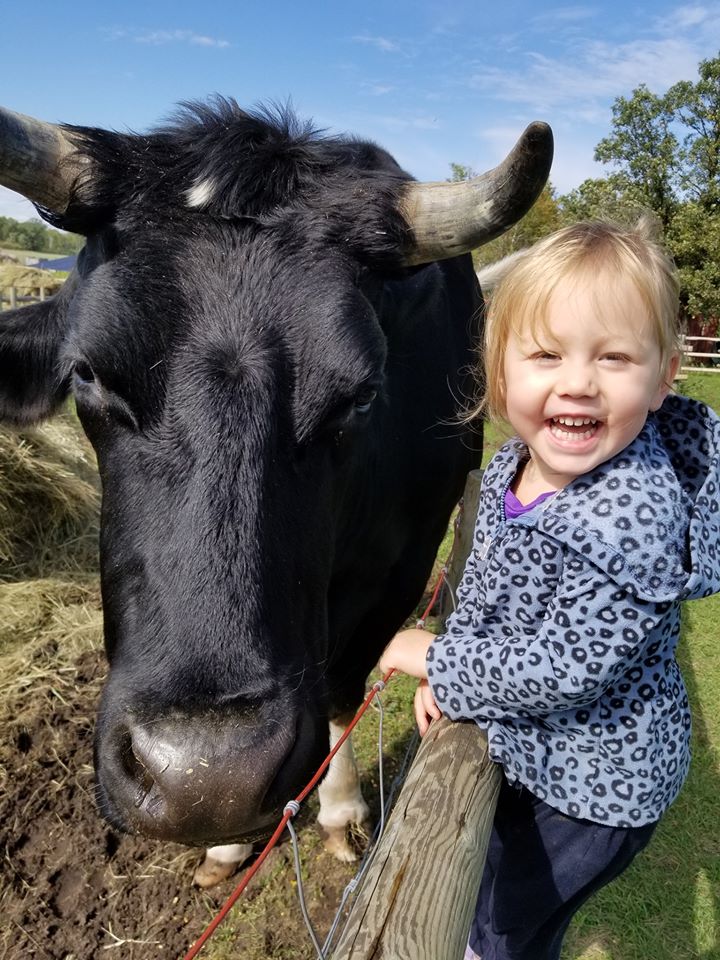
Five Small Resolutions with a Big Impact (on the planet and the animals)

Is helping animals on your list of New Year’s resolutions? Luckily, it has never been easier to start making a difference for animals and to expand your circle of compassion. A kinder world begins with each one of us making eco-friendly choices every day, no matter how big or small. So, here are five easy ways that you can start making a big difference for the planet and the animals (both locally and globally) that we share it with:
- Make a new friend: Visit and support the efforts of a local farm animal sanctuary to form a lasting friendship with a new farm animal friend. It won’t take long to see how sentient and intelligent farm animals can be and how much they love affection from humans, much like our dogs and cats at home. All farm animals deserve to perform their most basic natural behaviors, which industrialized agriculture often denies. By visiting and connecting with individual farm animals, you can then go on to advocate for better protection of their welfare. As Raelle Schoenrock of Kismet Creek Farm Sanctuary states, “Farm sanctuaries offer a way to connect with animals on their own terms, in a safe and natural environment. Interactions are never forced, and the animals are free to live out their natural lives. This allows for their individual personalities to truly shine, creating unique and memorable experiences for visitors of all ages.”
- Reduce your plastic intake: With the OCEANA conservation society’s recent report stating that over 86% of Canada’s recycled material is ending up in landfills, it is no longer enough for us to rely on recycling as a means of helping the planet. Rather, we must shift our focus towards reducing the amount of plastics we are purchasing. A great way to get started is to incorporate a new set of the ‘three R’s’ into your everyday life: Refuse, Reduce and Re-use. It’s time to re-evaluate our purchases and examine what plastic items we actually need to have in our lives. Is there a way to obtain the item without using plastic? Is there an existing item that you can borrow or purchase instead, rather than buying new? When you finish with your plastic bag, jar, other plastic items, is there a way to re-use the item in another way? Lastly, do you truly need the item at all? Once we start asking ourselves such questions like those above, we will see our own carbon footprints immediately reduced, and we can feel good knowing we are doing our best to reduce pollution and keep crucial ecosystems safe from plastic.
- Reduce your consumption of animal products: Factory farming is indisputably one of the largest contributors to climate change. When we consider all global land that is considered suitable for agricultural use, almost 80% of this land is used for raising livestock and growing crops to feed them, not humans. Simply put, industrialized agriculture is not sustainable, or eco-friendly. If we want to minimize our carbon footprint and our environmental impact, we need to start evaluating our food choices. With 41% of all land in the US alone currently being used for raising livestock or growing crops to feed them, one can’t help but wonder how many people could be fed instead, if that land were devoted to growing crops directly for human consumption. Even more alarming is how much water and other resources are used up by industrialized agriculture each year. For example, it takes over 15,000 Liters of water to produce a single kilogram of beef. In comparison, it takes roughly 300 liters of water to grow 1 kilogram of vegetables. When you also take into account the welfare concerns that arise when productivity and profitability come before an individual animal’s behavioral needs in industrialized agriculture, there are severe physical and psychological welfare ramifications for the animals being raised.
- Say no to seafood: When industrialized farming is discussed, we immediately think of land-dwelling animals. However, it is estimated that 1-3 trillion fish are pulled from the ocean every single year. Roughly 40% of aquatic species caught and killed in nets are considered useless bycatch. This includes aquatic animals like turtles, sharks, and non-target fish, as well as marine mammals like dolphins, seals and small whales. The OCEANA conservation group explains: ‘Bycatch is one of the biggest threats to the oceans and has contributed to overfishing and the dramatic decline of fish populations around the world. Commercial fisheries bring in approximately 160 billion pounds of marine catch around the world each year, which means almost 400 million pounds are caught every day. Recent estimates indicate as much as 40 percent of global catch is discarded Much of this captured wildlife is treated as waste, thrown overboard dead or dying. This conservation problem must be solved to ensure healthy oceans into the future.’ Ditching your plastic straw is no doubt a great way to start helping our oceans and protecting aquatic wildlife, but the reality is that straws make up for a fraction of total ocean pollution. The issue of banning plastic straws, though worthwhile, is a mere drop in the bucket compared to the 1.28 billion pounds of abandoned and discarded fishing nets left in our oceans every single year.
- Travel sustainably: Traveling is a great way to experience the joys that the world has to offer. However, if done irresponsibly, traveling can also be quite destructive for the environment and wildlife. With eco-friendly traveling on the rise, it is important to always keep the following three key points in mind before you set off:
- Do not visit attractions that offer animal encounters. This includes posing with a monkey on the beach, to swimming with dolphins, or riding elephants. It is unnatural for wild animals to constantly encounter humans and this can be very stressful for many animals. Many companies offering animal encounters have taken the animals from the wild, use negative and forceful training methods, or keep the animals in unnatural, cruel conditions when away from tourists. Instead, visit sanctuaries and rescues that do not breed their animals, or offer any sort of public interaction with the animals.
- Avoid traveling by plane whenever possible. The average plane emits roughly 53 pounds of carbon dioxide per mile. That C02 starts to add up when you consider how many planes are in the sky at any given time, and how far they are often traveling. Walking and taking public transport, when applicable, are much better for the environment and for shrinking our carbon footprint while traveling.
- Leave no trace – which is to say, that when you visit a destination, the only thing you should leave behind are your footprints. It takes plastic water bottles 450 years to decompose, so though it may be tempting to rely solely on plastic bottles of water while you travel, those bottles will be around for centuries to come. Alternatively, source water purification travel systems and bring your own water containers as an environmentally friendly way to travel.
Lastly, support the efforts of the Winnipeg Humane Society! The Winnipeg Humane Society is Manitoba’s longest running animal welfare organization. With public education campaigns, behavioral classes, monthly presentations, dedicated animal protection officers, and an animal welfare branch devoted to improving the lives of all animals, we are so much more than a shelter. Your donations are what keep us going and see that our commitment to helping all animals continues to grow year after year. Supporters can also apply to volunteer with our animal compassion team to get more involved in helping all animal species.
Whether you incorporate item on this list, or all five, you will be well on your way to helping make this world a kinder, more compassionate place for all.
Resources:
https://oceana.ca/en/blog/canadas-plastic-problem-sorting-fact-fiction
https://blog.ucsusa.org/doug-boucher/beef-tropical-forests-our-climate-and-our-health
https://www.bloomberg.com/graphics/2018-us-land-use/
https://blueskymodel.org/air-mile
http://www.fishcount.org.uk/published/std/fishcountchapter19.pdf
http://www.fao.org/3/i2727e/i2727e00.htm
https://oceana.org/sites/default/files/reports/Bycatch_Report_FINAL.pdf

